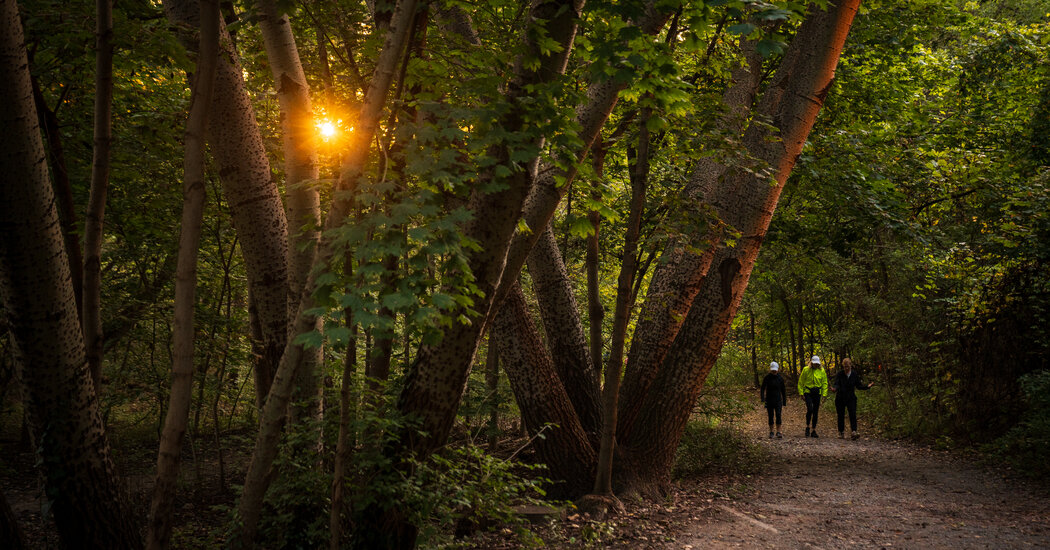A sprawling network of ravines threaded through Canada’s largest city offers urban explorers an oasis of birdsong, burbling creeks and whispering trees.
Dangling my feet over the bank of a fast-running creek, I watched the sunlight filter through a leafy canopy above me. Here, in the middle of a city of three million people, I felt utterly alone, and though I was loath to admit it, a little disoriented. But that was why I had come.
Much of Toronto is oriented around a straightforward grid of streets. But for those who know where to look, there is an emerald city hidden inside that grid. Like the Bois de Boulogne in Paris, Central Park in New York and Yoyogi Park in Tokyo, the ravine system in Toronto forms an oasis, albeit a sprawling and decentralized one.
But unlike those landscaped parks, Toronto’s ravines feel wild. Many Torontonians — let alone visitors — never descend into their vastness. Sitting on a mossy log listening to the water of Yellow Creek, I felt so peaceful, I could have been in a national park. Instead, I was a 10-minute walk from the corner of Yonge and Bloor Streets, one of the city’s main intersections.
‘Going down into a burrow’
Over two days, with fall on the doorstep, I set out to walk several of the ravines and experience a more primal and less manicured version of Canada’s largest city. Torontonians often see the ravines as a space unto themselves where underground parties, guerrilla gardening and homeless encampments coexist. And this separateness lends itself to the unexpected; in my ambles along their paths, I have encountered coyotes, nude sunbathers and, once, Eugene Levy (or his doppelgänger).
“People go into the ravines because it’s close to their home, but it’s almost like they’re going down into a burrow,” said Geoffrey Chan, a lead steward with the Toronto Nature Stewards program. Mr. Chan, along with about 800 other volunteers, works in partnership with the city to care for the 27,000-acre ravine system. Stewards pick up litter, cull invasive species and plant native ones.
